 Title :: Constrained Scaling of Trimmed, Multi-Patch NURBS Surfaces
Title :: Constrained Scaling of Trimmed, Multi-Patch NURBS Surfaces  Title :: Constrained Scaling of Trimmed, Multi-Patch NURBS Surfaces
Title :: Constrained Scaling of Trimmed, Multi-Patch NURBS Surfaces  Goal :
Goal : modifying (scaling) an existing model (such as a vehicle) in length, heigth,
or width without affecting certain significant features (trimming curves) on
the original model and, consequently, avoiding expensive re-desiogn process.
 Current Achievement :
Current Achievement :phase. They are the attach-and-deform based approach and the fix-and-
stretch based approach. The first result was published in the ASME DTM
Conference:
"Constrained Shape Scaling of Trimmed NURBS Surfaces" (with P. Zhang and C. Zhang), Proc. 1999 ASME Design Theory and Methodology Conference (ASME DTM-99), September 12-15, 1999, Las Vegas, NV.
"Constrained Shape Scaling of Trimmed NURBS Surfaces using Fix-and-Stretch Approach" (with P. Zhang and C. Zhang), to appear in Computer-Aided Design.
 First technique : the attach-and-deform based approach
First technique : the attach-and-deform based approachThe new surface is formed by scaling the given (multi-patch) NURBS surface according to the scaling requirement first. The (original) features are then attached to the scaled NURBS surface at appropriate locations. Because of the difference between the curvature of the scaled surface and the original features, a deformation of the scaled surface is needed to guarantee complete attachment of the features to the scaled surface. The deformation process of the scaled surface should not change the boundary curves of the scaled surface (to avoid violating boundary condition with adjacent surfaces). It should also reflect the shape and curvature distribution of the scaled surface. This is achieved by minimizing a shape-preserving objective function which covers all the factors in the deformation process such as bending, stretching and spring effects. The resulting surface maintains a NURBS representation and, hence, is compatible with most of the current data-exchange standards. This process can be illustrated as follows :
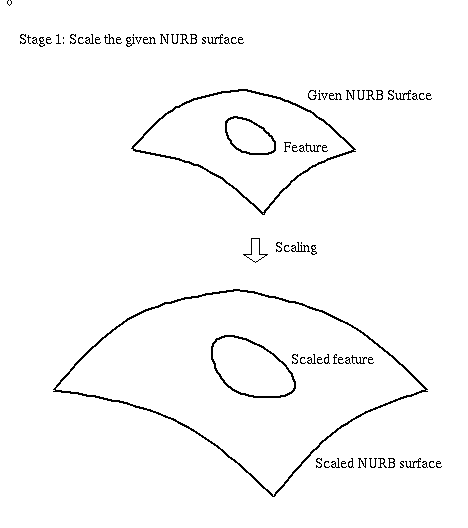
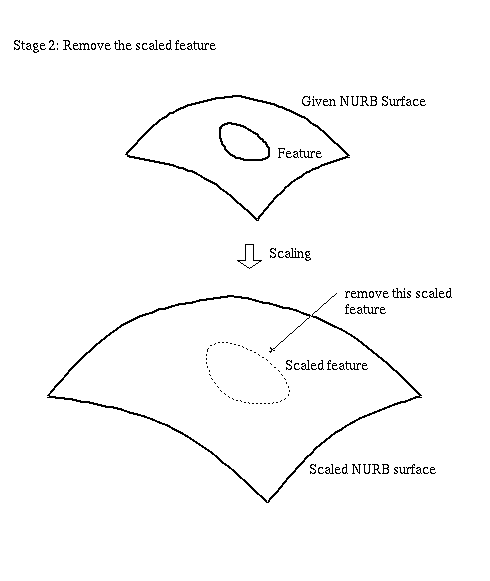
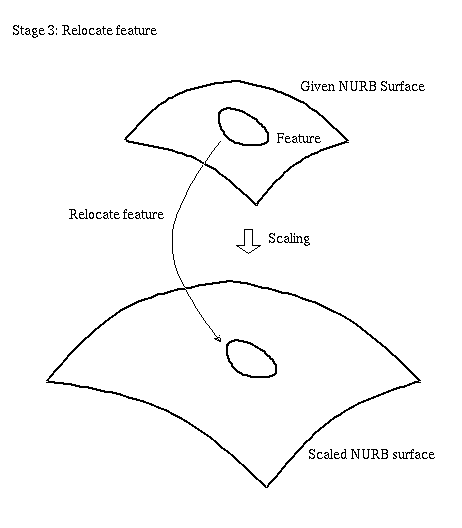
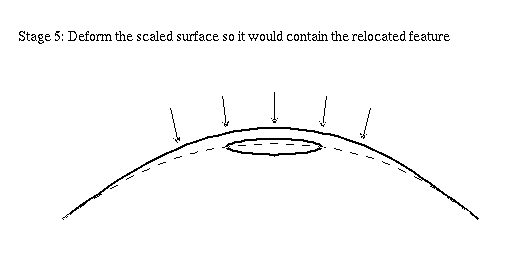
 Examples of the first technique :
Examples of the first technique : have been used in the test cases
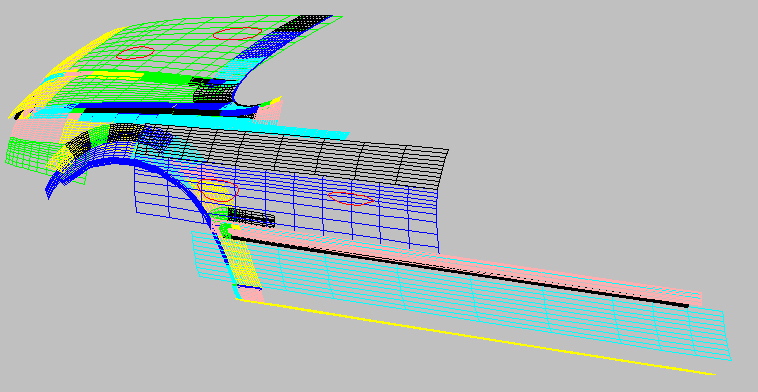
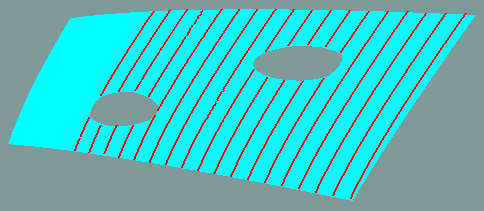
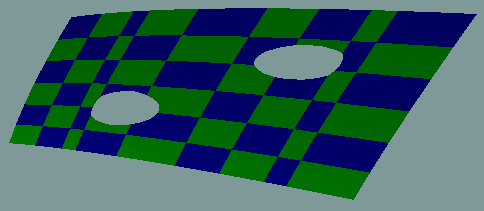
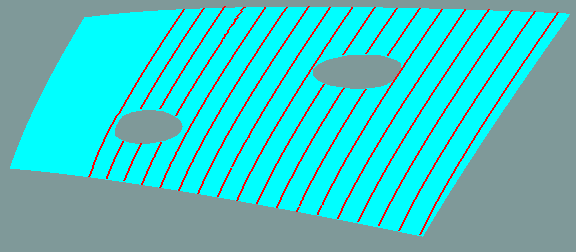
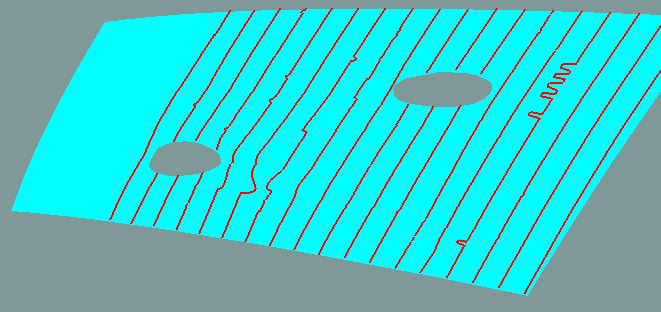




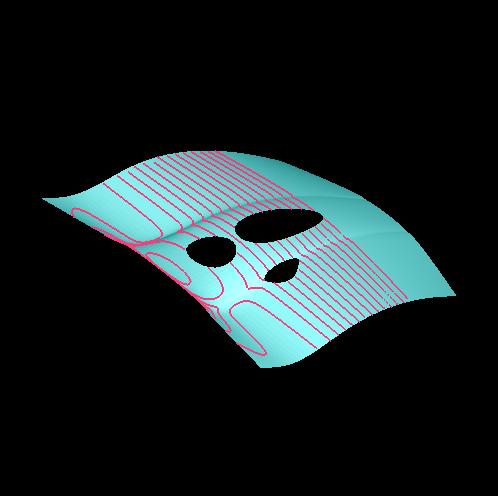
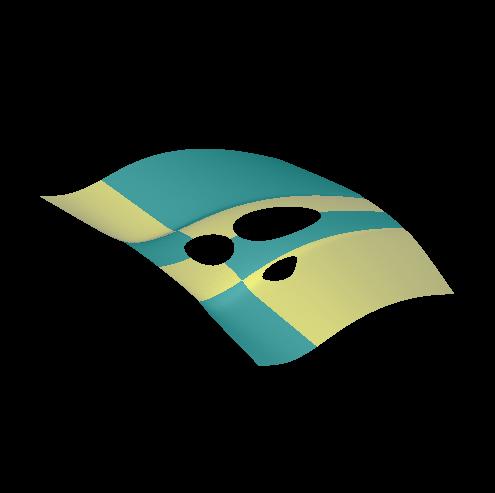
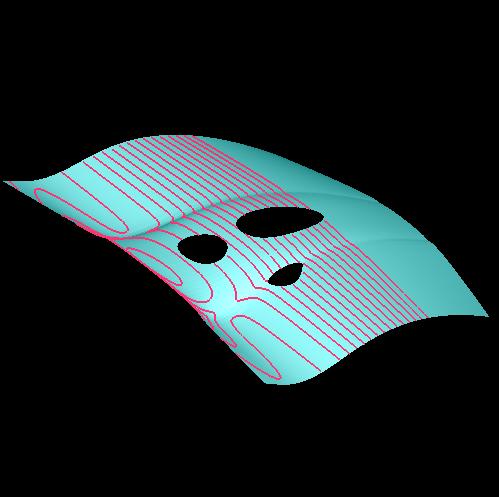
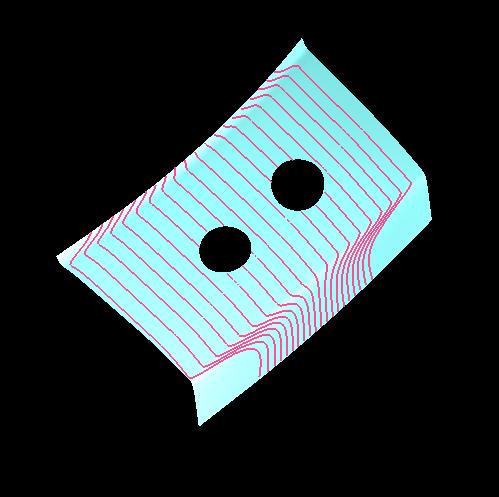
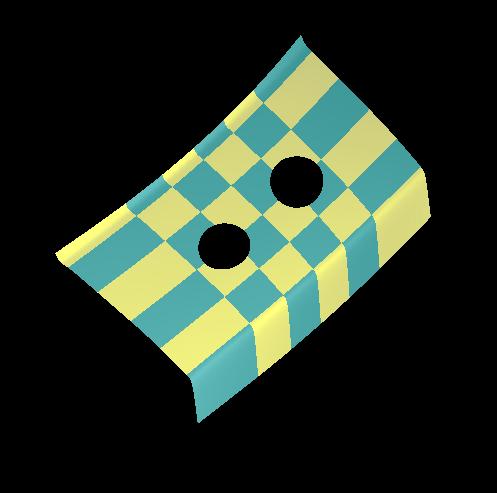
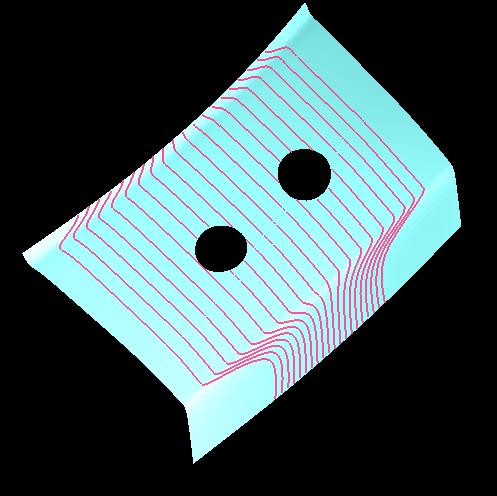
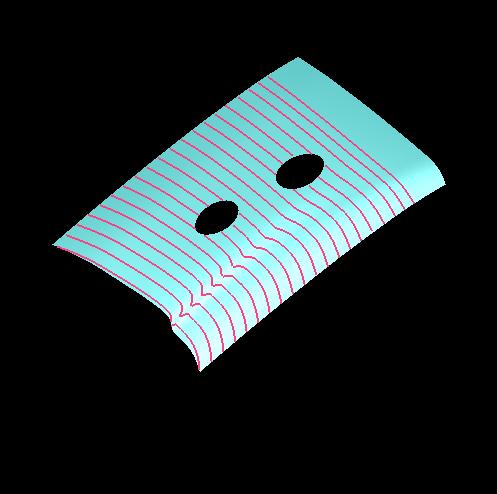
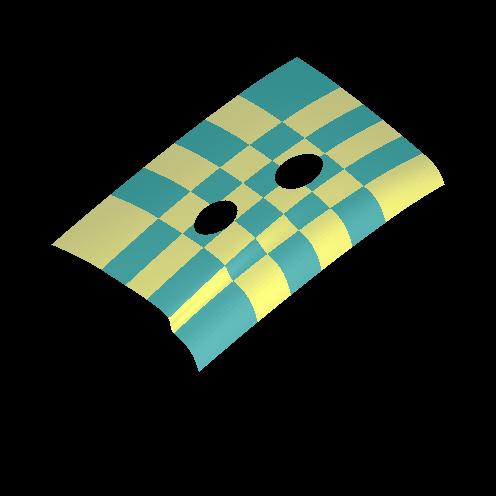
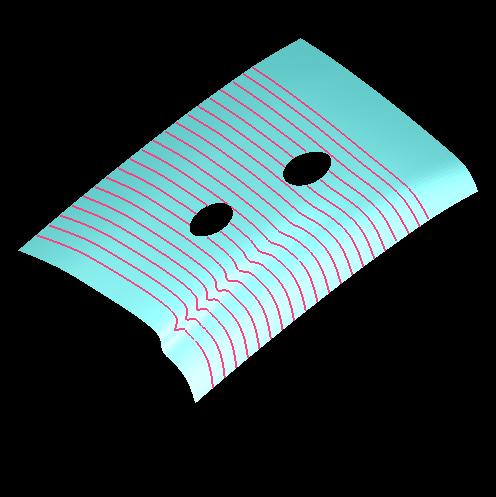
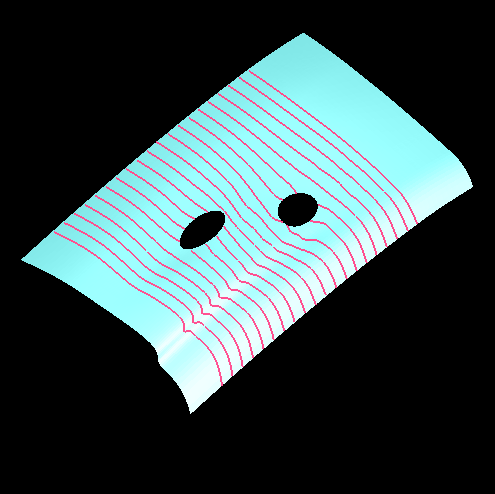
 Second technique : the fix-and-stretch based approach
Second technique : the fix-and-stretch based approachThe basic idea of the second technique is to hold selected regions that contain the features unchanged while stretch the remaining part of the surface until certain boundary condition is reached. More specifically, the new surface is formed by fixing selected regions of the given trimmed NURBS surface that contain the trimming curves and stretching the remaining part of the surface to reach certain boundary condition. The stretching process is performed using an optimization process to ensure that the resulting surface reflects the shape and curvature distribution of the scaled version of the given surface. The resulting surface maintains a NURBS representation and, hence, is compatible with most of the current data-exchange standards. The idea can be illustrated as follows :
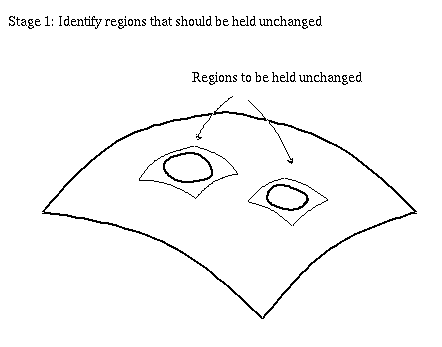
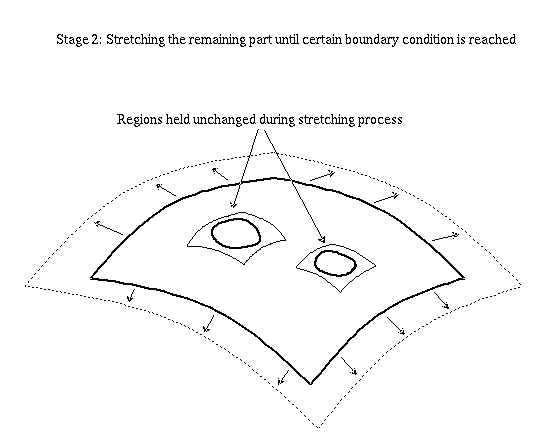
 Examples of the second technique:
Examples of the second technique:


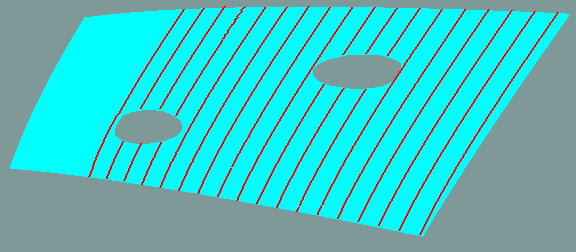
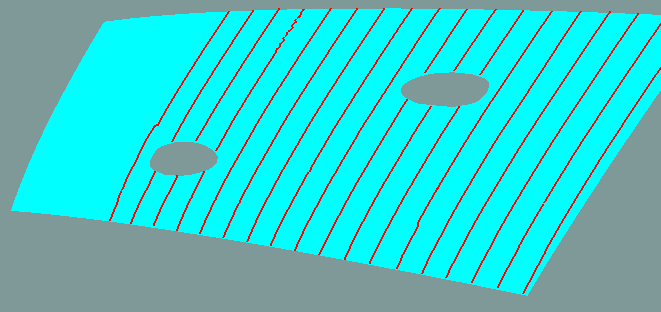




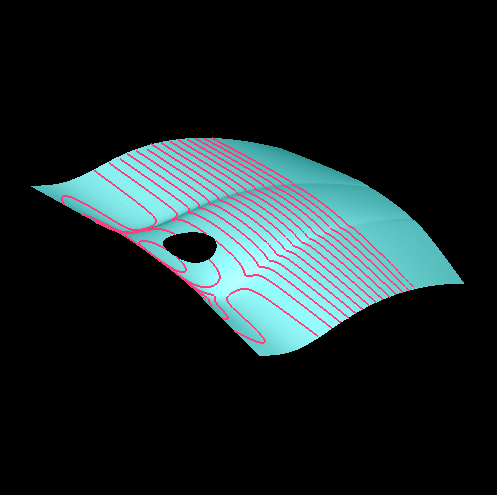
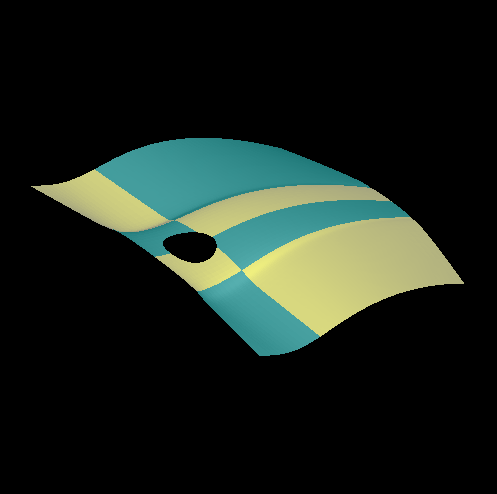
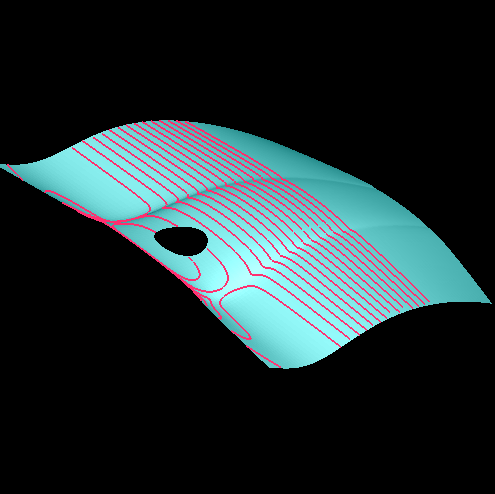
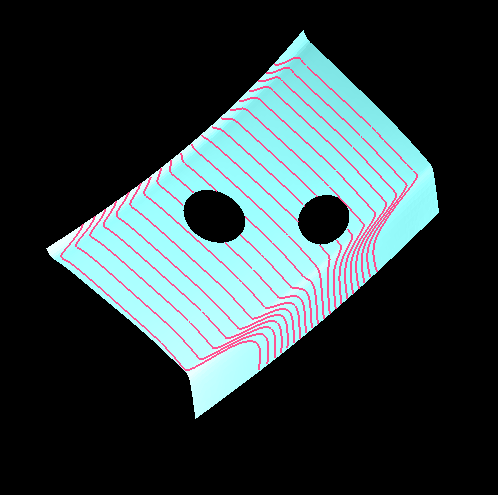
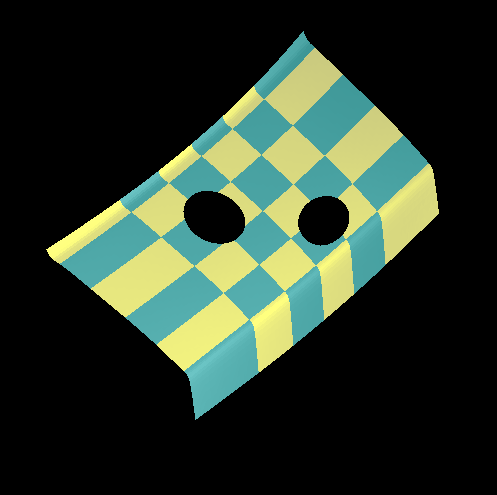
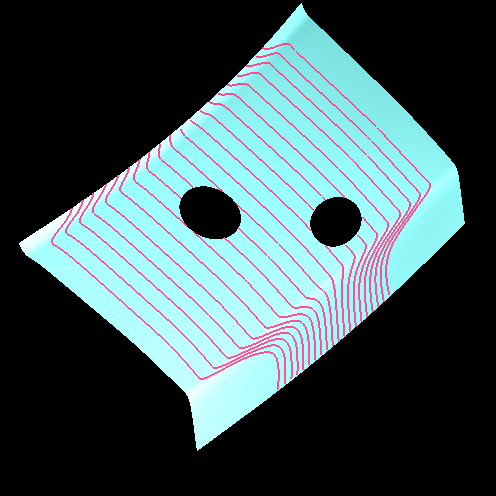
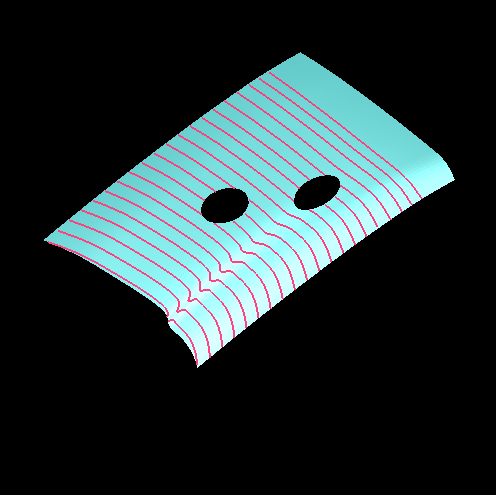
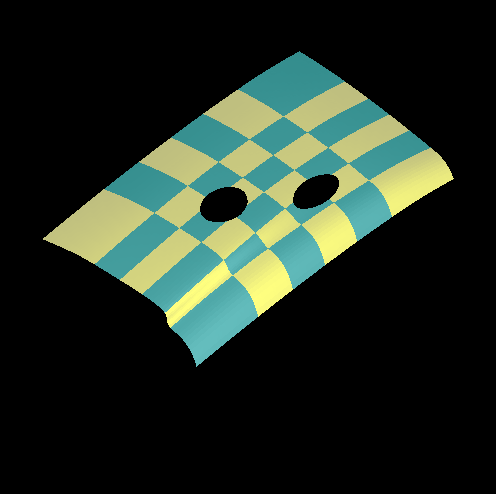
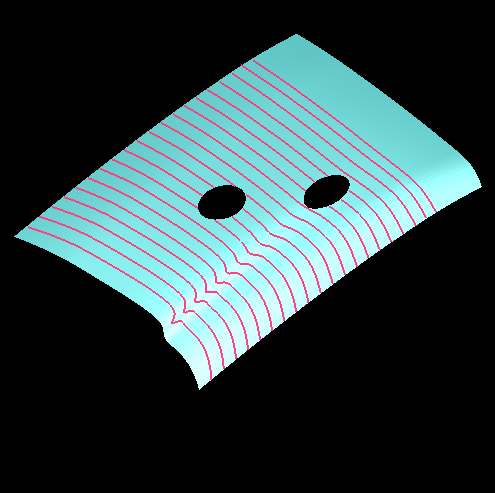
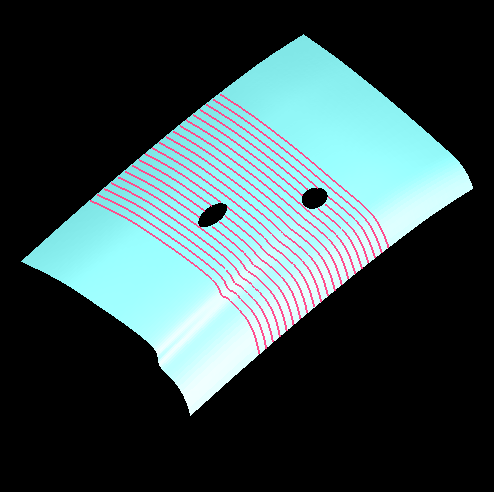
 Comparison :
Comparison :The second approach is more robust than the first one in that it can tolerate scaling factors of bigger values (up to 2 in some cases, see Examples 1, 2, and 5 for approach 2), while the first approach would generate abnormal curvature distribution for scaling factors as low as 1.3 (see Examples 1, 2, and 5 for approach 1). The second approach also guarantees that the features (trimming curves) remain exactly the same after scaling. The disadvantage of the second approach is that it needs more memory than the first approach in some cases. Hence, it can not handle as many trimming curves as the first approach does on a machine with small internal memory. For instance, the first approach can handle three trimming curves for Example 3 while the second approach can only handle one trimming curve for that example on our machine.
 Comments
Fuhua (Frank) Cheng / cheng@cs.engr.uky.edu
Comments
Fuhua (Frank) Cheng / cheng@cs.engr.uky.edu